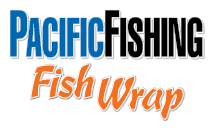Can you believe it? Another halibut season is upon us with the 2011 fishery starting at noon tomorrow.
The season last eight months, closing at noon Nov. 18.
Here are the catch limits by regulatory area.
Be safe and good fishing, everybody.
In a related note, the National Marine Fisheries Service today announced it will implement controversial measures to control halibut catches on charter boats in Southeast Alaska (Area 2C).
Specifically, charter clients will continue to face a one-fish daily bag limit. A new twist this year is that keepers can be no more than 37 inches long.
Charter operators say a 37-inch halibut weighs around 23 pounds.
Here's the NMFS press release:
March 11, 2011
Halibut stock decline forces increased charter measures
The National Marine Fisheries Service today announced it is implementing the regulatory recommendations of the International Pacific Halibut Commission due to concerns over declining halibut stocks. These regulations include limiting the maximum size of a halibut caught by charter anglers in Southeast Alaska to 37 inches, and retaining the one-fish-per-person-per-day rule that began in 2009.
The halibut stock is declining due to reduced numbers of fish reaching a catchable size range, lower growth rates, and higher than target harvest rates. The stock remains at risk of further declines. Conservation of the halibut resource is the primary concern and management objective of the measures.
At its annual meeting in January, the IPHC recommended the maximum size rule for charter anglers in Southeast (Area 2C) as a way to maintain charter harvests at the annual guideline harvest level of 788,000 pounds in 2011. The Southeast charter fleet catch has exceeded its harvest level every year since 2004.
The IPHC's recommendation is based on the analysis and methods adopted by the North Pacific Fishery Management Council. Because of particular concerns for impacts on small businesses in Southeast, NMFS intends to ask the council to review the methodology used to determine maximum size limits, including a 42-inch limit. If the council chooses to adopt a different limit than the IPHC has recommended, NMFS will go back to the IPHC to ask that it modify its recommendation to match that of the council.
"The declining halibut stock is impacting both charter and commercial halibut fishers all along the West Coast from Washington state to Alaska," said James Balsiger, NMFS administrator for Alaska.
NMFS is committed to working cooperatively with Canada to jointly manage the halibut stock "for the long-term benefit of both our countries," Balsiger said.
NMFS has implemented numerous restrictions on the Area 2C charter fleet in an attempt to more closely align charter harvest with the limit, but those measures have been insufficient. Even with the one-fish bag limit in 2010, the charter halibut fleet exceeded its harvest limit by 491,000 pounds, or 62 percent. Each year that the charter fleet exceeds its harvest limit, it leads to a lower fixed quota for the commercial fishery the following year. The commercial catch limit in Area 2C is 73 percent lower in 2011 than it was in 2003.
The purpose of the rule is to allow charter halibut fishermen to continue their operations while staying within the harvest limit, and minimizing adverse effects on the charter fishery, its sportfishing clients, and the coastal communities that serve as home ports for the fishery. Allowing halibut to rebuild will best serve the economic interests of both the charter and commercial fisheries over the long term.
The harvest limit was adopted by the NPFMC and implemented by NMFS in 2003. It is expected to be replaced by a catch-sharing plan in 2012, which would establish management measures designed to prevent overharvesting of the halibut resource and result in a sustainable fishery.
Subscribe to:
Post Comments (Atom)


4 comments:
thank goodness they have some restrictions. they keep blasting over their allocation and keep buying more boats. hope relief is in sight.
Just another type of handcuff for southeast Alaska businesses and communities. The GHL as it stands is a bogus allocation method for both commercial and sport guys. Feds don't care about how many families they hurt by being uneducated and still implementing more bad regs. They should have in season closures if quotas are exceeded, this would help everyone be more responsible.
Closing the season early does not encourage responsible fishing. On the contrary it encourages fishers to harvest the most as fast as possible. These regulations will keep the season open longer, allowing for the more responsible fishing you were talking about.
mike
The trawl fishery killed 12 millon pounds of halibut that were not havested for consumtion. what a waste ,this is were they are all going .fix the really problem. This has gone on for many years and now based on someone's sound science"a little to late" sport and charter mom and pop bussiness have to suffer. they all want us to fight and never fix the big problem
James
Post a Comment